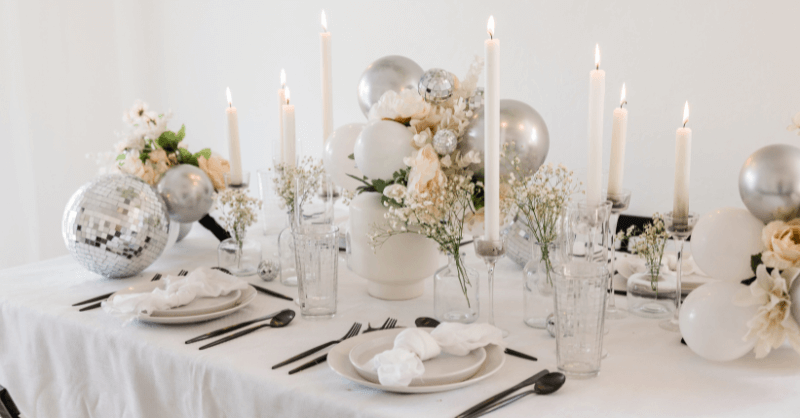Regardless of whether you are setting a table for two courses or eight courses, there are certain rules that should always be followed. Each guest should have their own setting in front of their seat at the table. Their table setting must include everything they need to fully enjoy their meal.
Here are some general guidelines on how to set a table:
• Cutlery is set in the order of use, working outside-in. Outer utensils are for the first courses with the innermost set reserved for the main course.
• Forks are typically placed on the left side of the setting. However, there is an exception for the oyster fork, which is occasionally used in formal table settings and is positioned on the right, next to the knives.
• Knives are typically placed to the right of the setting. The only exception to this rule occurs when there is a bread plate. In this case, the bread plate is positioned at the top left of the setting, with the butter knife placed on top of the plate.
• Glassware is arranged above the knives. Various glasses for different drinks are grouped together in the top right corner of the setting.
• When serving dessert, position the dessert spoon and fork above the plate. The spoon handle should be on the right, while the fork handle should be oriented to the left. This arrangement ensures that the right hand can easily pick up the spoon, and the left hand can use the fork.
• Napkins can be positioned either to the left of the forks or underneath the forks. If space on your table is limited, you may also place the napkin in the middle of the setting or on top of the charger plate.
• Use a charger plate, which is positioned at the center of the table setting and serves multiple purposes. It enhances the table’s aesthetics and adds a decorative touch. It ensures that your guests’ settings are never empty throughout the dinner. Importantly, it also acts as a useful tool for handling hot plates, allowing guests to adjust the charger plate without risking burns from a hot plate. The charger plate doesn’t always need to be a traditional plate; it can be a classic placemat or something more modern, such as a piece of slate or wood.

Each item on the table has a specific function – whether it’s glassware, cutlery, or crockery. It is improbable that you would set a table without knowing what you are serving your guests, so take the time to plan your table as thoroughly as you plan your menu. You might find it useful to write out your menu and determine what cutlery and crockery will be needed for each course.
For instance, when serving soup, you need to place a soup spoon on the table. If you’re serving a light meal with seafood, it’s unlikely that you’ll be drinking red wine, so there’s no need for large red wine glasses. Always remember to only set out on the table the items your guests will actually need.


![]() 9 minutes
9 minutes